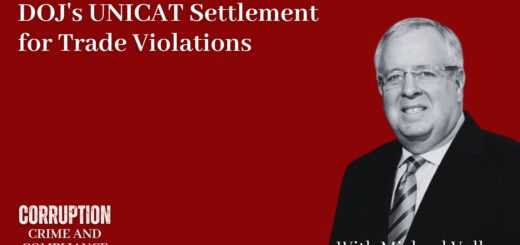Best Practices in Developing an Internal Investigation Plan (Part II of II)
 In Part II of Best Practices for Internal Investigations, I examine how to design an appropriate investigative plan.
In Part II of Best Practices for Internal Investigations, I examine how to design an appropriate investigative plan.
While it is hard to predict at the outset the course that an internal investigation will take, a preliminary investigation plan is an important management tool. There are several helpful steps to take:
1. Define the objective of the investigation and the most efficient way to achieve the goal.
2. Consider how best to achieve the results in a timely manner, while protecting confidentiality and fairness to the subjects of the investigation;
3. Ensure that the investigation is thorough and adequately documented;
4. Ensure that the investigation is conducted in accordance with company policies and legal requirements (e.g. Upjohn warnings to employees).
An internal investigation is a fact-gathering process involving document review and interviews. If it is possible, it is important to review documents before interviewing witnesses.
The first step in gathering the documents is to meet with in-house personnel to identify the locations of possible relevant documents – electronic and hard-copies. One member of the team should be assigned to document preservation and responsibility. The investigative team should determine if an outside vendor is needed to preserve and collect the relevant documents.
In order to preserve documents, the investigative team has to make sure that a hold notice is issued to every company where relevant documents may exist. A company’s obligation to preserve documents is triggered when the company reasonably anticipates litigation or knows that evidence may be relevant to future litigation.
It is important to cast a wide net when preserving documents. It does not mean you will review every document but it is important to preserve documents which may become relevant as the focus of the investigation changes. The preservation notice should be defined to include archived documents and stored email messages.
The preservation notice should include:
- General description of the alleged conduct and the relevant dates for preservation of documents;
- Instruction to employees to preserve documents;
- Identification of a legal point of contact to answer legal questions
- Identification of a technical point of contact for technical questions related to preservation of documents.
After preserving the documents, the investigative team needs to design and implement a system for identifying and tracking documents so that the source of every document and the date of collection is maintained.
The document review should be conducted with a basic understanding as to the scope and nature of the relevant issues. It is impossible to predict where the internal investigation will lead but it is important to keep an open mind as to the issues, the players that are involved, and the leading suspects for misconduct. The investigation must be fair and thorough. The investigation is commited to finding the facts and doing so in an objective manner. If there is any hint of bias, the investigation may be threatened. The government credits objective and fair investigations. If the government suspects that the investigation was conducted with a bias, the company will suffer and be required to “re-do” or conduct additional investigative work before presenting the results.















